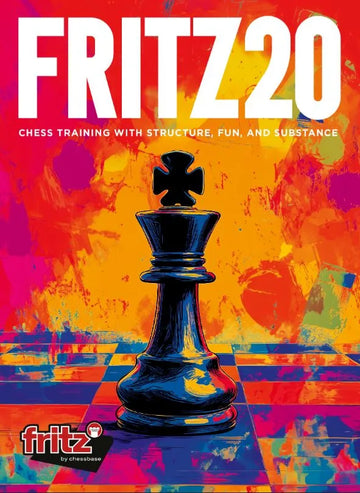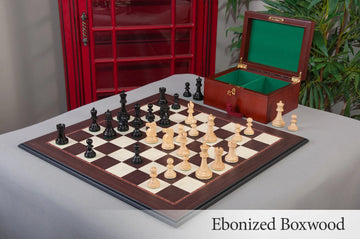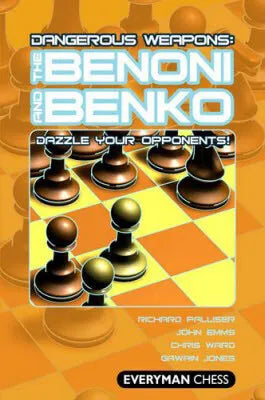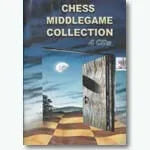The Best Answer to 1.d4: The Old Benoni Defense
At club level against 1.d4, who would have guessed that the highest-scoring response is not 1...d5, nor 1...Nf6, but 1...c5, the Old Benoni Defense!
If you’ve never considered playing this move, you’re not alone! The Old Benoni is only played by 4% of players, meaning many people have no idea how to play against it! Of course, this is part of the joy of any offbeat opening—taking your opponent out of their comfort zone into territory you know only too well.
This underrated opening even defies the London System and leads to a much more open, attacking game than White may have been looking for. If you like openings with tricks, traps, and surprising twists, you’ve come to the right place!

Old Benoni Defense Statistics at Club Level
Nowadays, the Old Benoni Defense (1.d4 c5) isn’t very highly regarded at Grandmaster level. If White knows the perfect moves, your opponent can usually secure an advantage. Instead, the most successful response to 1.d4 at higher levels is 1...Nf6, the Indian Game.
Yet, club-level chess is a very different board game! Amazingly, the Old Benoni Defense is the highest-scoring answer to the queen's pawn opening (1.d4) at club level and the only reply that scores Black a majority of games!
The following statistics are from nearly one billion games played between players of 1000-1800 Elo at all time controls on lichess.org:

Note that the Old Benoni is especially effective in blitz and bullet games where your opponent has less time to calculate the fast-flying attacks that the opening is known for. The statistics are slightly less pronounced at longer time controls.
Common Variations of the Old Benoni Defense
Because most players don't know the main line of the Old Benoni Defense, you can expect to play against a wide range of responses. Most of them allow you to win an advantage with Black, if you only know how!
If White Accepts the Pawn (2.dxc5)
In 23% of games, White accepts Black’s pawn gambit and captures on c5. This is White’s most popular response, yet not a wise one! In reply, Black plays 2...e6, threatening to win back the pawn with its dark-squared bishop. Now, what will White do?
If White Tries to Defend the Pawn (3.b4)
The worst thing White can try to do is try to defend the pawn with 3.b4. Black can use the same tactics seen in the Queen’s Gambit to win back c5 anyway. Not to mention the potentially fatal traps along the way!
Your answer starts with 3...a5. Now what would you do as White?

White’s most common response here is 4.c3, but it loses badly! After 4...axb4 5. cxb4 Qf6, White’s only way to save its rook is to sacrifice its knight or bishop! Ouch!
None of White’s other options hold much favor either! 4.a3 loses a rook along the open a-file if White recaptures, and no other response rectifies White’s sad situation.
If White Gives Back the Pawn
There are many ways for White to continue development without trying to preserve its pawn advantage. They may play 3.e4 or develop either of their knights. Regardless, you can recapture the pawn (3...Bxc5) and continue with normal development: knights on c6 and f6 and pawn on d5.
After castling and ...Re8, the e-pawn can also be pushed to e5 to liberate the light-squared bishop. Here is a typical position on move 7: 1. d4 c5 2. dxc5 e6 3. Nf3 Bxc5 4. Nc3 Nf6 5. Bf4 Nc6 6. e3 O-O 7. Bd3 Re8

Queen Attacks on b6 and a5!
In addition to the strong, natural development you can achieve after 2.dxc5, you also have a variety of ways to launch menacing attacks along the dark-squared diagonal with your queen.
Pro Tip: On every move, check for attacks your queen could make on b6 and a5! These can be quite unnerving for your opponent to defend, especially in blitz and bullet games when they don’t have time to find the best moves.
The queen and dark-squared bishop can often combine to attack f2, and any piece entering the 5th rank is susceptible to attacks from a5!
If White Plays 2.d5 – The Old Benoni Defense Main Line
Those who know how to play against the Old Benoni Defense never capture on c5 but instead push their pawn up to d5. This is the best response for White, and the main line that all grandmasters play.
A simple and effective way to play the main line as Black is to follow with 2...d6, 3...g6, and 4...Bg7, almost irrespective of what your opponent plays. Continue by developing your knight on f6 and castling kingside.
A typical setup looks like this:

Knights to e5!
Notice here how e5 is a weak square for White, especially if you can remove its knight on c3. For this purpose, play Bg4 and trade it off for the knight. After this, aim to land a knight on e5, either via d7 or g4. A knight posted here and protected by another knight is, of course, especially strong.
Expanding the Queenside
As well as landing a knight on e5, Black has great prospects of expanding the queenside. Looking at the setup above, check out how Black can prepare a pawn to hit b5 and b6. This is a great way to challenge White’s pawn or bishop on c4 and knight on c3.
In All Other Cases, Capture the Pawn!
If White neither captures with 2.dxc5 nor plays the main line, 2.d5, just remember: capture on d4! Whether White plays 2.c4, 2.e6, 2.Nf3, or anything else, you play 2...cxd4.
In most lines, you can win an advantageous position with Benoni Defense trademarks like fianchettoing the dark-squared bishop and striking double attacks with the queen on b6 and a5.
Queen Attacks on b6 and a5
Just like the lines we looked at earlier, Black can often win a quick advantage with queen attacks on b6 and a5. These are especially effective once your opponent has moved its dark-squared bishop. For example: 1. d4 c5 2. c3 cxd4 3. cxd4 Nf6 4. Bf4 Qb6

Now, Black’s queen is hitting b2 and pressuring d4 simultaneously, meaning White can’t easily defend with its queen. Many players feel pressured in such situations to play b2-b3, but this is a grave mistake! All of the dark squares on White’s queenside are consequently made very weak. It's now all too easy for Black’s bishop and queen to infiltrate, causing havoc and likely material loss at the very least.
Additionally, if you can coax White’s pieces onto the 5th rank—for example, leaving a pawn to capture on e5—double attacks from Qa5 can often win a piece!

Conclusion: It's Time to Revive The Old Benoni!
The Old Benoni Defense is a shrewd weapon against 1.d4 at club level. An aggressive challenge to White’s center, it boasts heaps of tricks and traps that can win Black a swift, convincing advantage.
What’s more, the Old Benoni prevents White from playing strong, familiar openings like the London System and the Queen’s Gambit that your opponent has likely specialized in. It makes a delicious way to throw White off their typical game plans, especially if you’re looking for a lively game.









